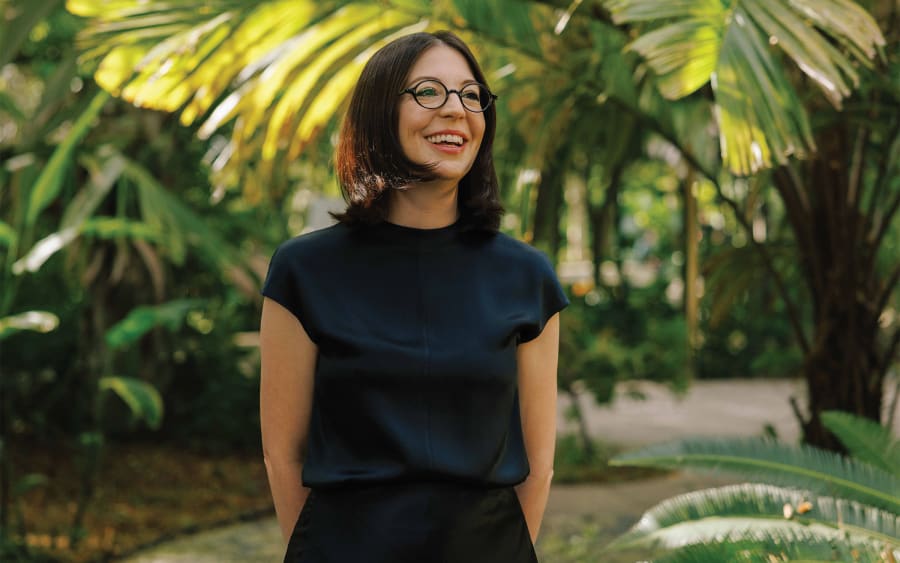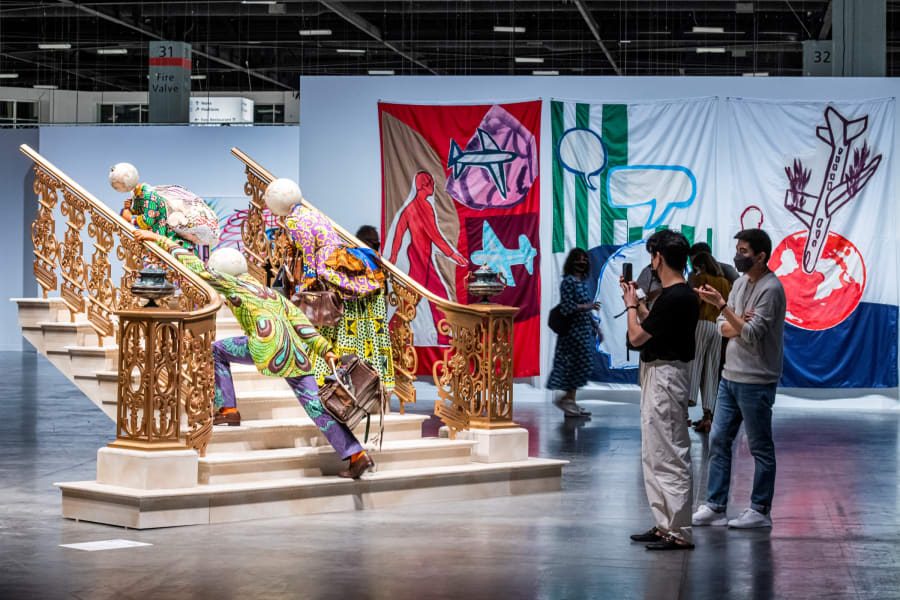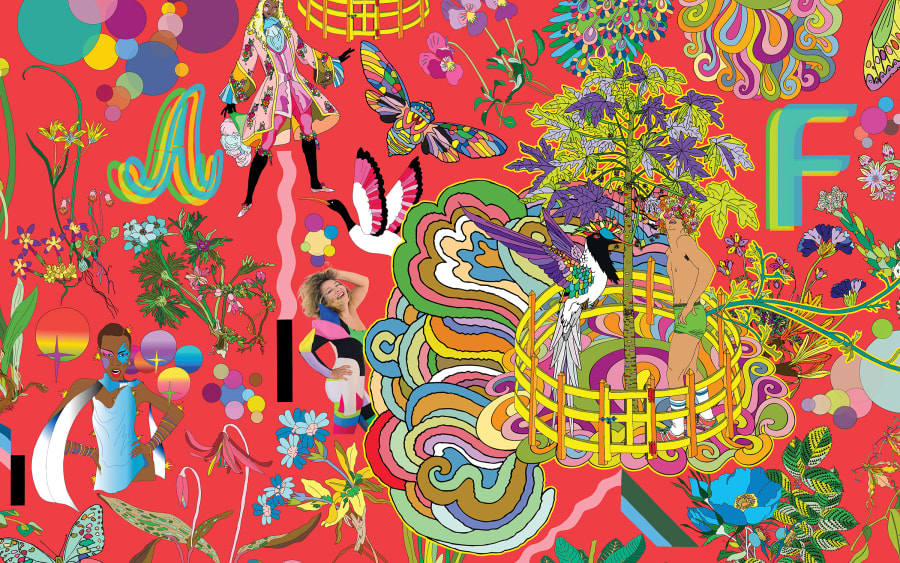One may wonder, looking at the exhibitions Yasmil Raymond has curated, what the common thread might be. While associate curator at Walker Art Center, she organized a 2008 solo exhibition by Tino Sehgal, the artist who leaves no physical trace and instead develops ‘constructed situations.’ During her tenure at Dia Art Foundation, Raymond worked with Thomas Hirschhorn on his Gramsci Monument (2013), an outdoor pavilion in a Bronx housing project built and maintained by residents that hosted lectures, a radio station and daily newspaper. At MoMA, Raymond co-organized ‘Judd’, the massive 2020 retrospective of the minimalist sculptor, and, with Ruba Katrib, the Rirkrit Tiravanija retrospective at PS1 in 2023, which included a pad thai station. When we speak, Raymond searches for a connection between all these very different artists. ‘My interest in art is so broad, maybe there’s no real way of summarizing how I end up working with certain artists,’ she reflects. But then a lightbulb goes off.
‘Scale is the one thing that continues to be the link—the thing that links many of the projects of the last 20 years.’
Raymond’s interest in scale reflects a profoundly humanitarian concern for the sociopolitical issues that demand big thinking. As a teenager, when she left San Juan for the School of the Art Institute of Chicago, where she pursued a painting and printmaking degree, Raymond was exposed to a much larger world of artmaking. She was introduced to the critical pedagogy of Paulo Freire and various forms of social practice, and started working with at-risk students. ‘I arrived there thinking I was going to learn how to make art,’ Raymond says. ‘Then I ended up, in less than a year, working in different communities and going back and forth between planting trees, building a garden, having a barbecue with gang members and hanging out.’
Because she was working on artist projects that go far beyond the commodity, ‘the museum felt like the destination,’ Raymond says. Three years after graduating, Raymond did a summer internship at the Guggenheim in Venice, then spent two decades curating for the aforementioned museums. From 2020 to 2024, she was rector at Städelschule, one of the leading European fine art schools. What excites her about curating Meridians — a platform for large-scale projects that push the boundaries of the traditional art fair layout — at Art Basel Miami Beach 2024 for the first time is her sense that it will function as a ‘true bridge’ for the 18 artists (and 20 galleries) involved. These artists, Raymond says, have ‘the ambition to change art with art. They are engaging in a dialogue with history through the making of works of art, rather than objects.’
The artists come from all over the world — Greece, France, South Korea, Argentina and beyond — and the group is intergenerational too. When we spoke, Raymond was in the midst of drawing the floor plan. ‘I’m having a great time seeing some dynamics happening between artists that probably have never in their lives been in the same room together — like the legendary Alice Aycock with someone like Roberto Huarcaya (a photographer from Peru), and [Chinese artist] Jinshi Zhu.’ The thing that binds all these artists together? ‘These works are of such scale that you can’t fit them in your living room,’ Raymond says with a chuckle. ‘Unless you have a palace.’
Art Basel Miami Beach unveiled its Meridians sector in 2019 for ambitious work that otherwise would (and could) not be shown at an art fair. The pieces will be ‘geared toward public collections,’ Raymond says, ‘and that excites me because that’s where my heart is. My heart is in museums and in the public’s contact with art.’ Throughout her career, Raymond has been hyperaware of the problems inherent in valorizing representation over substance, an artist or curator’s background instead of their work and ideas. ‘I’ve never been the Latin American curator, or the Caribbean curator,’ Raymond says, which was part of a conscious attempt to avoid the pigeonholing that so often happens with non-white curators and artists. And yet, her method has resulted in a diverse list of artists for Meridians, including Vietnamese conceptual/archival artist Danh Võ, Land Art Forward — an initiative founded by environmental art pioneer Alan Sonfist — and Cuban American abstractionist José Parlá.
At museums, curators are often given assignments, or inherit long-term plans. For Meridians, Raymond had free rein to follow her gut, to seek out artists who are addressing the most pressing concerns of contemporary life. The research itself was exhilarating. ‘Deep down, I have a huge, voracious appetite for learning about other artists,’ she says. The curator was inspired by seeing many artists returning to large-scale work. Perhaps, she speculates, this signals an attempt by artists to reassert their role in society — a means of taking up space and pushing for change. Raymond sees Meridians as a unique opportunity to synthesize her curiosities and the sweep of her aesthetic interests, and to take stock of this sociohistorical moment. ‘It took me 20 years to get to this place,’ she says.
This article was originally commissioned for the 2024 issue of the Art Basel Miami Beach Magazine.
Art Basel Miami Beach will take place from December 6 to 8, 2024. Learn more here.
Rob Goyanes is a writer and editor from Miami, Florida. His work has appeared in BOMB, e-flux journal, Los Angeles Times, and elsewhere. He lives in Los Angeles, California.
Published on November 6, 2024.
Caption for header image: Yasmil Rayond. Photograph by Ramon Haindl for Art Basel.


